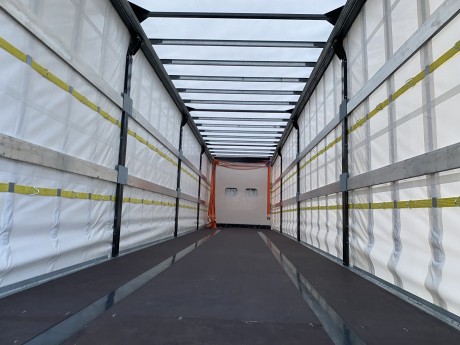N.B. Please note that this article has now been superceded by the DVSA guidance issued 27th March 2015
Since VOSA's launch of their Load Restraint ‘Enforcement Matrix’ back in the spring of 2012, there is still much confusion about what is, and what is not, compliant. According to Mark Horton, Traffic Enforcement Scheme Manager at VOSA, there have been 1,269 load restraint defects detected since 1st April this year; 1,190 of those resulting in prohibition. With over 300 trained VOSA roadside inspectors now in force, it is perhaps surprising that many operators still aren’t sure if their loads are considered safe.
VOSA’s role is not to dictate which method of load restraint an operator should specify. Their task is simply to enforce existing recommendations and codes of practice which are already in force, such as the DfT Safety of Loads on Vehicles, HSE Load Security and Construction & Use Regulations. The confusion from operators has arisen due to the interpretation of those guidelines, leading to assumptions, rumour and misdirection.
Recommendations for a compliant load restraint solution falls squarely on the shoulders of the manufacturer and Don-Bur has spent considerable time and effort ensuring that they comprehensively understand both the recommendations and, perhaps more importantly, VOSA’s interpretation of them.
Focussing predominantly on curtainsiders, what is crystal clear is that the days of roof mounted straps are over. So too are beliefs that “strap-in-pocket” curtains will ensure a swift getaway from the VOSA stops.
Some operators believe that they can simply retro-fit EN12642-XL rated load-bearing curtains. Interestingly, EN12642-XL rated curtains do not exist as the rating refers to the bodywork as a whole but even so, EN12642-XL does not fully comply with the C&U requirement of 50% load retention through the sides. Even if you do have EN12642-XL rated bodywork, you will need additional load restraint to be compliant.
What if your load is lightweight; under the 400kgs per pallet threshold mentioned in the VOSA enforcement matrix? Regrettably, this merely affects the rating of the ‘defect’ and thereby whether you’re issued with an advisory or a prohibition. It does not negate the need for “suitable load restraint”.
So what is compliant? The overriding ethos is to ensure that all loads are strapped down to the deck with rave-to-rave anchors, ensuring that the load always maintains contact with the bed of the vehicle, irrespective of curtains. This applies to all curtainsiders, including double decks. The trouble is, how do you practically achieve that?
Don-Bur offers "Load-Fix", a compliant system which provides rave-to-rave strapping or sheeting, depending on individual requirements. It is suitable for multiple height payloads and even variable height stillages. When not in use, the system simply retracts up into the dead roof space and can be moved easily from front to back and vice versa. The solution can also be used on double decks.
Load-Fix can be specified on trailers or rigid bodywork as part of a new build programme or retro-fitted to an existing fleet.
There is surprisingly, one current concession. Provided that a curtainsider has both curtains and roof-mounted nets that are tapered in toward the top (so that it touches and applies inward pressure on the load) and that the combined strength of both curtain and nets retains a minimum 50% of the load weight, this is considered compliant. This method is known as “positive fit” and known to many in the brewery industry as a “Load-Hugger”. When using this method, a supplementary transverse net must be used at the rear of the load. The same method can also be applied to double decks, ensuring that independent nets are provided on both decks. It is noted however, that this system may not be considered compliant in the future so those who have a long-term compliance plan should opt for a rave-to-rave method.
Whatever the load, we recommend that you get the latest advice from a reliable source. Mimicking your competitors, waiting to see what others are doing or simply doing nothing puts you at risk of incurring prohibitions, fines or even prison sentences.
We’d love to hear from you – get in touch today!






